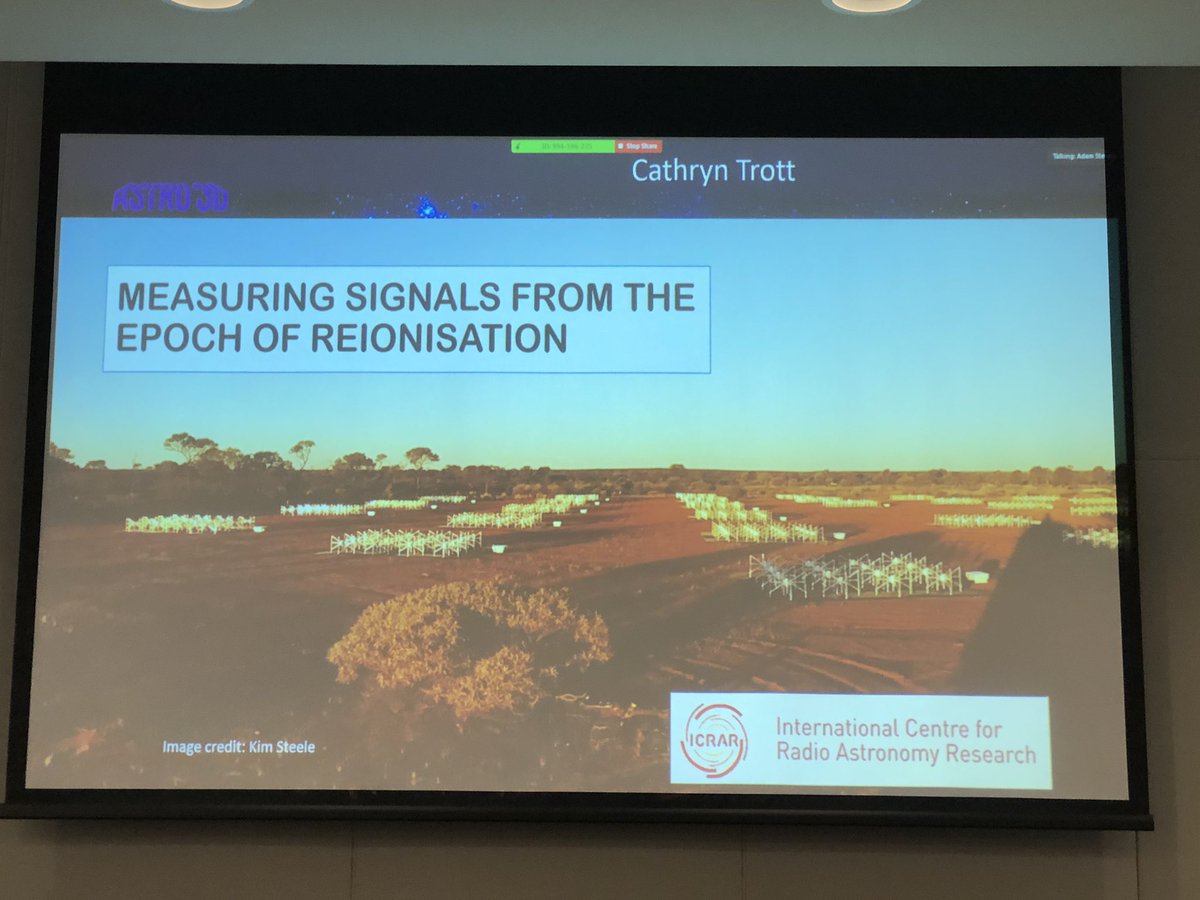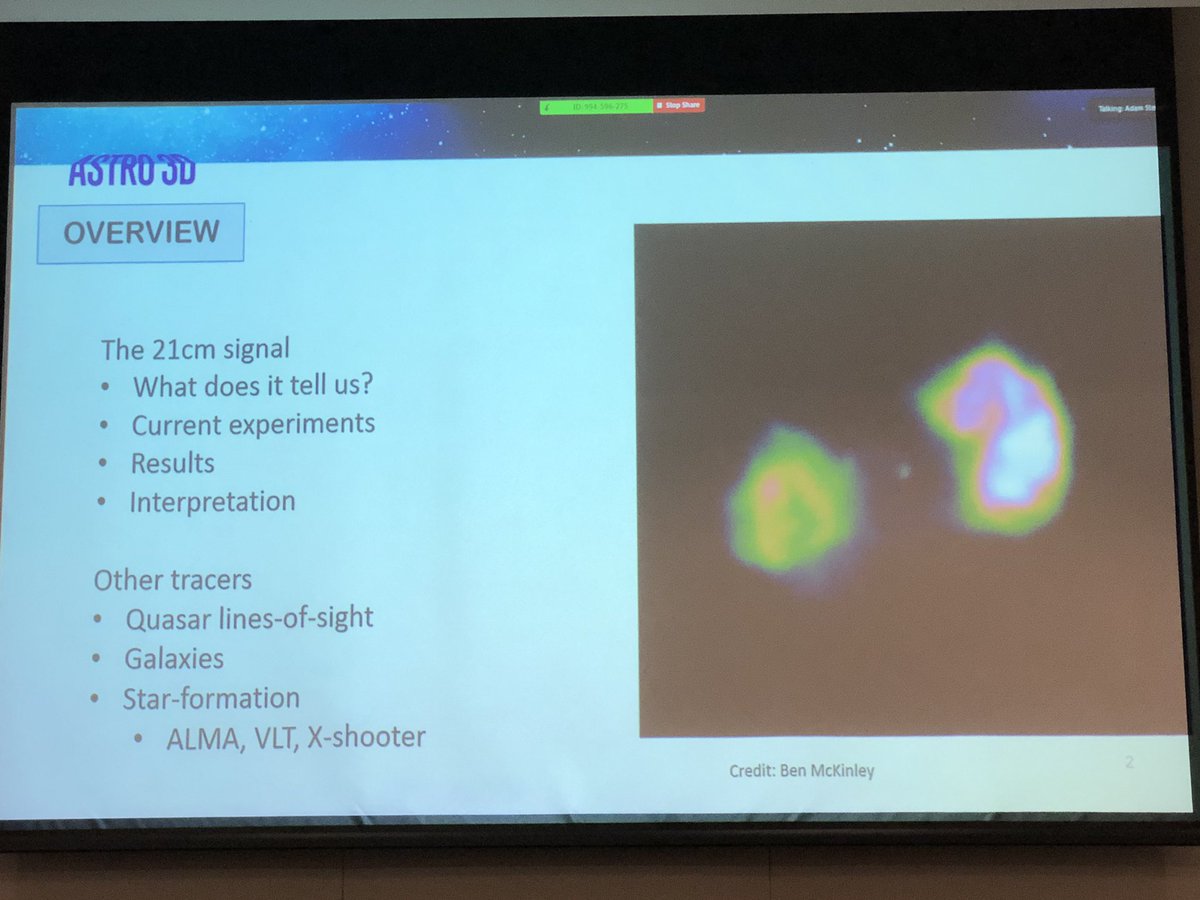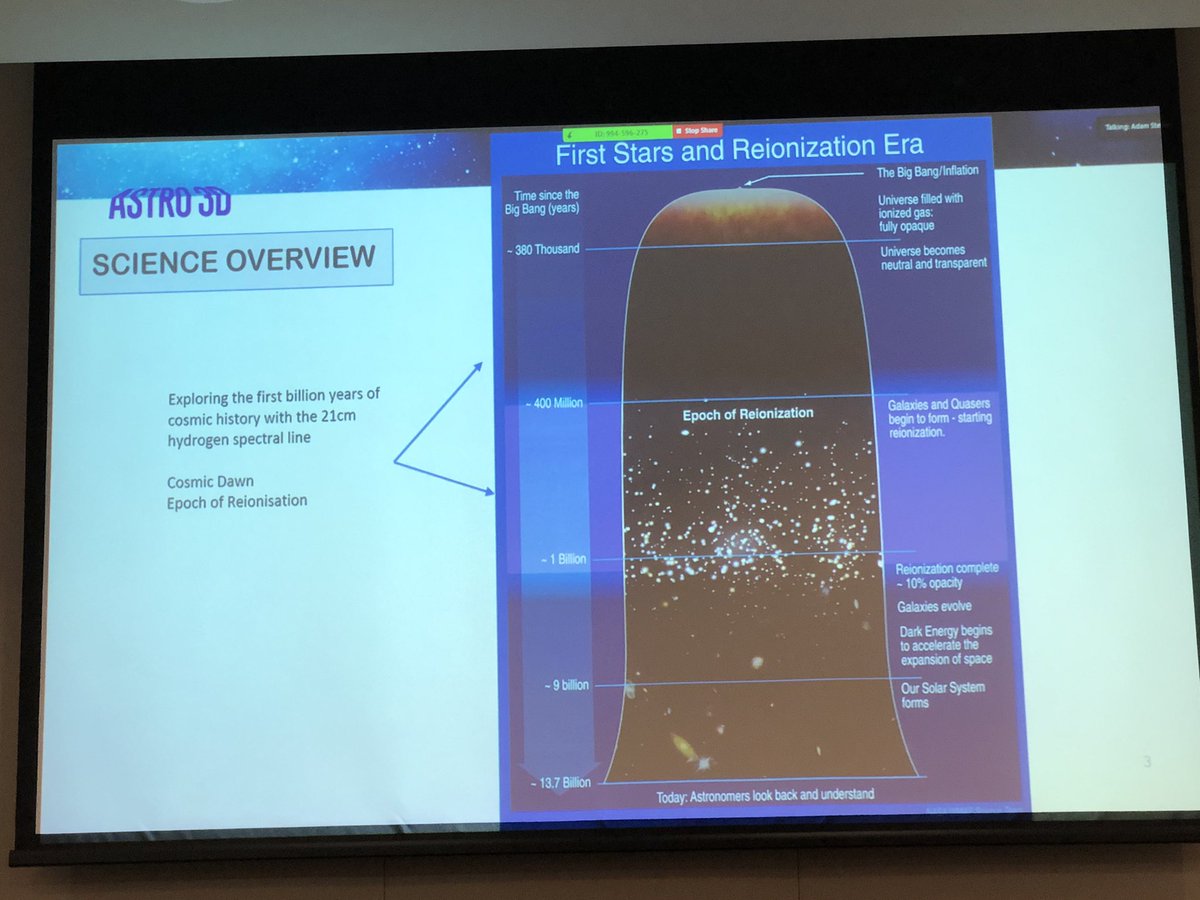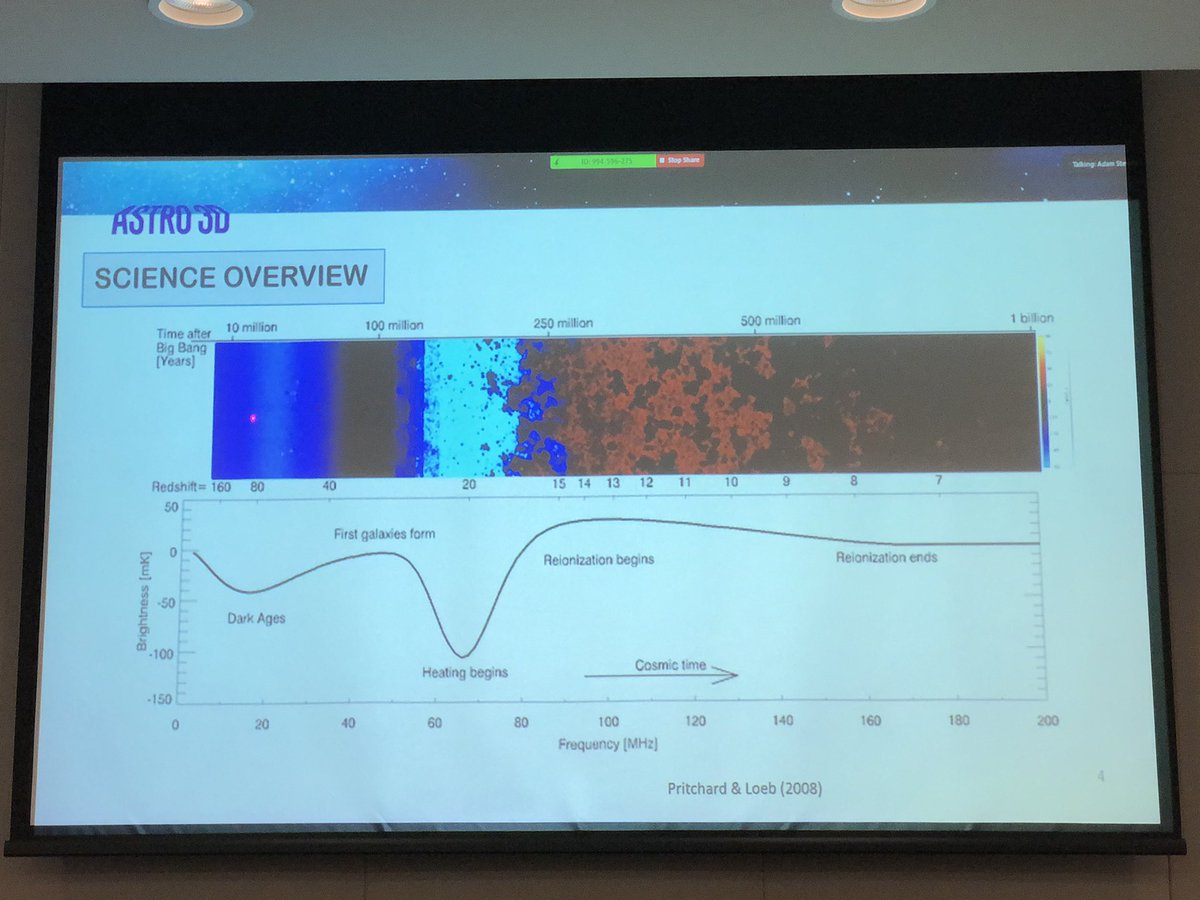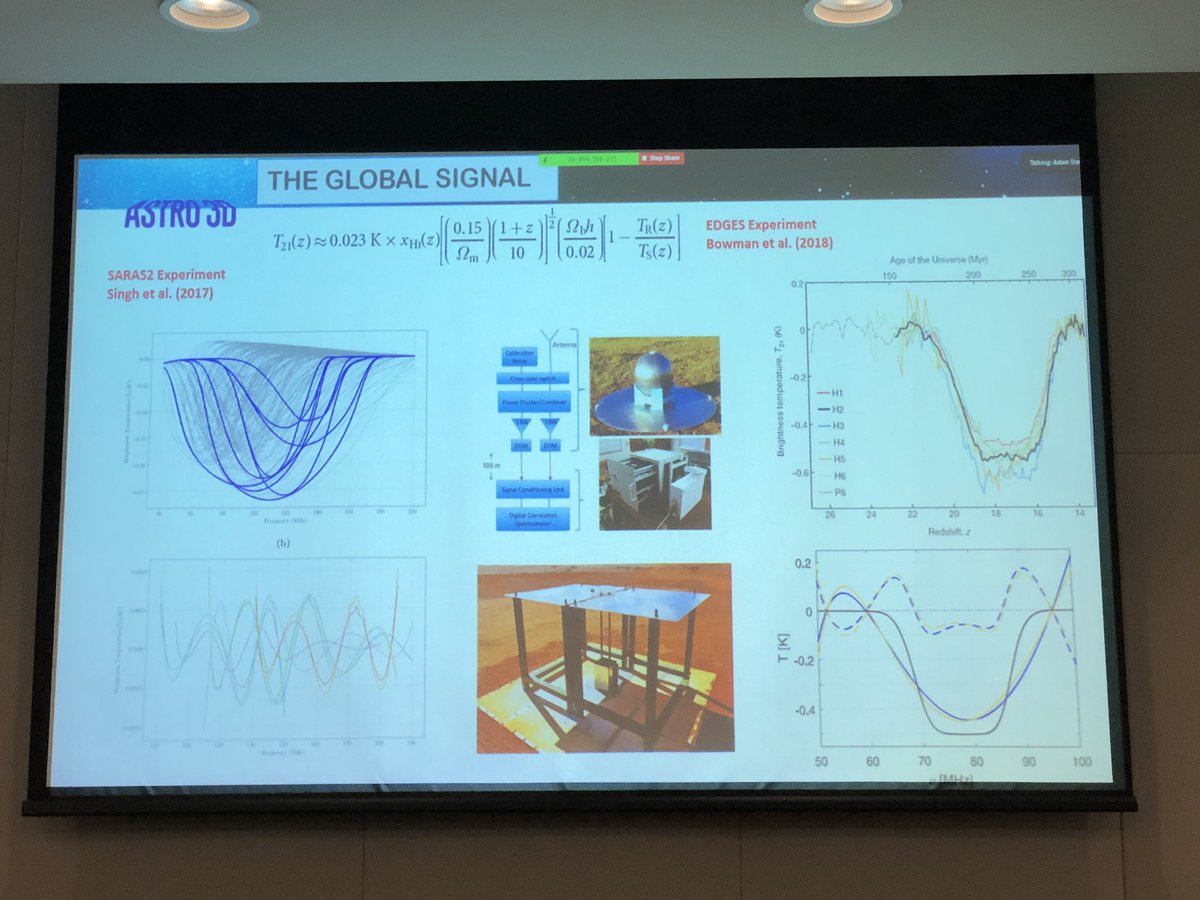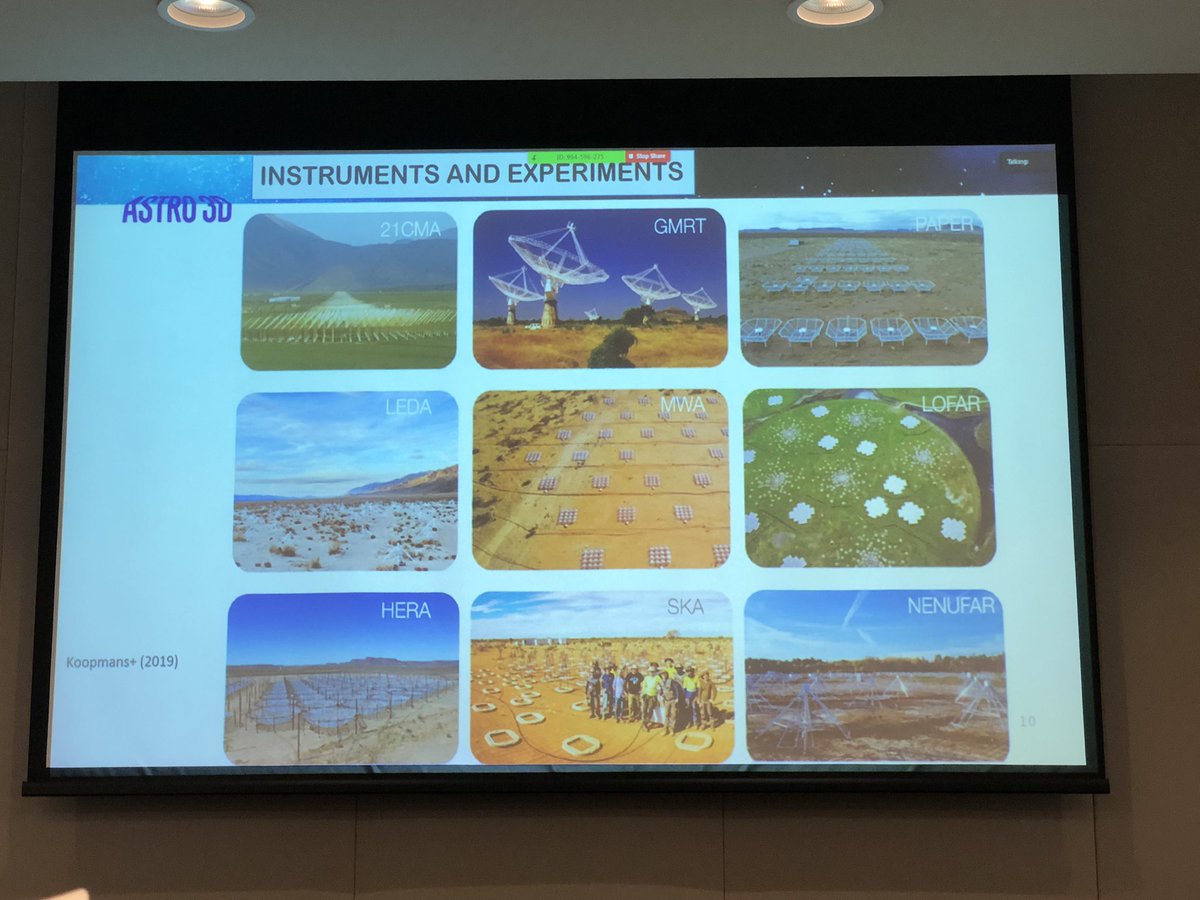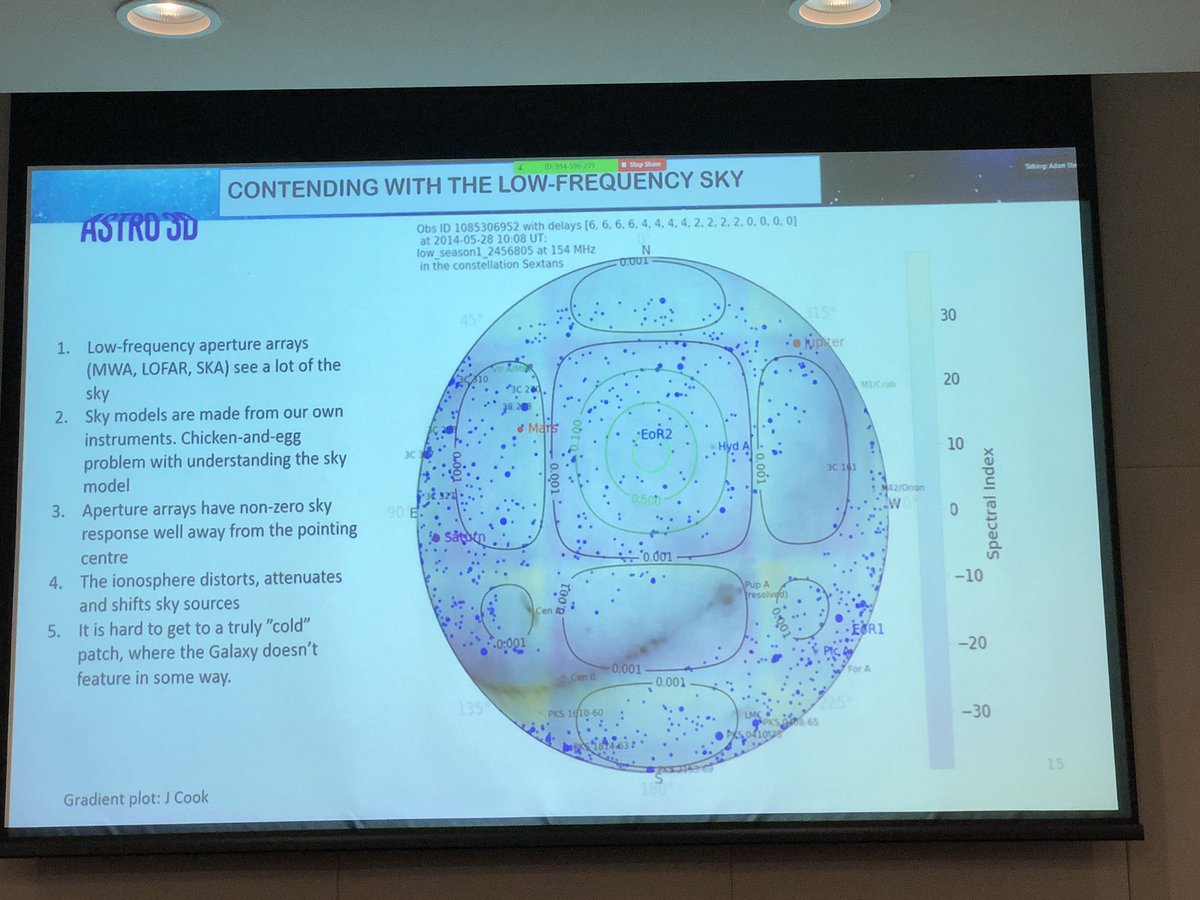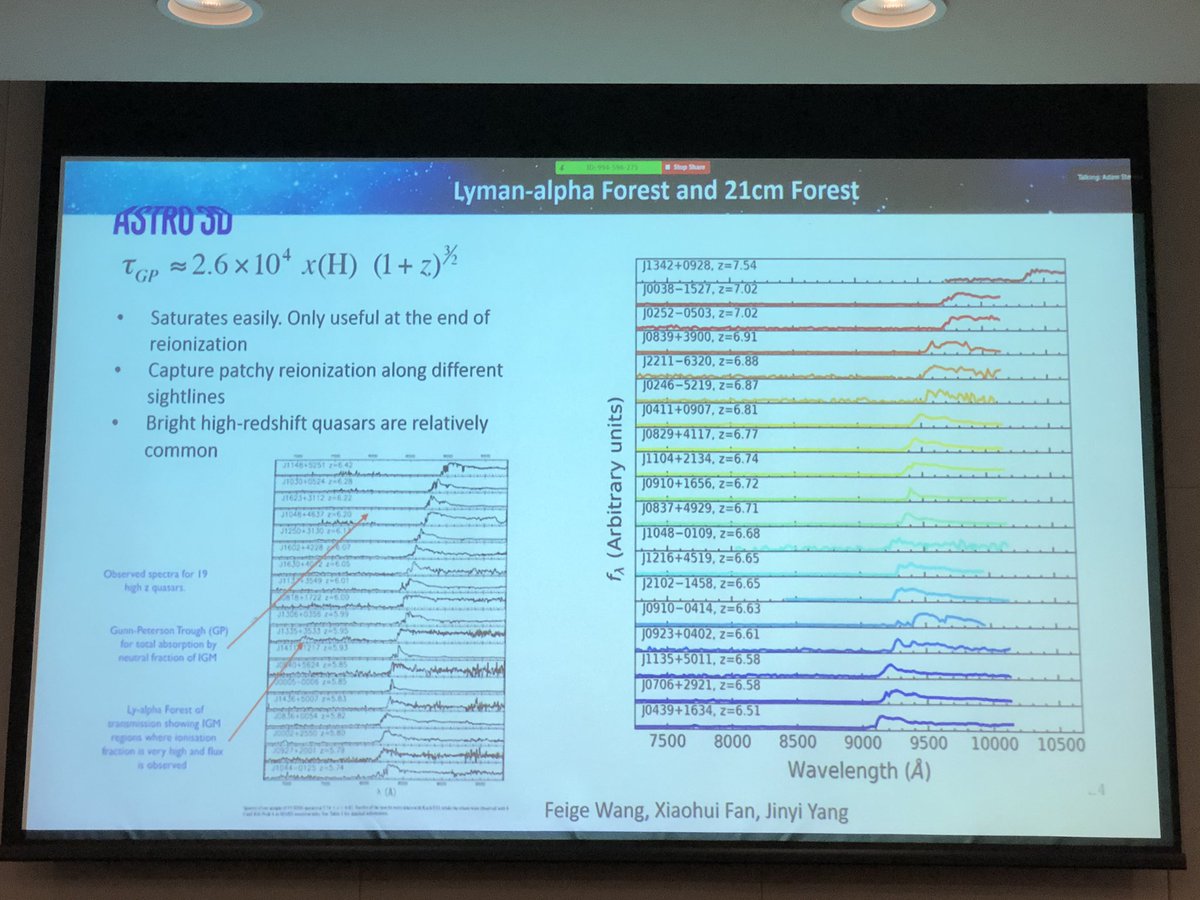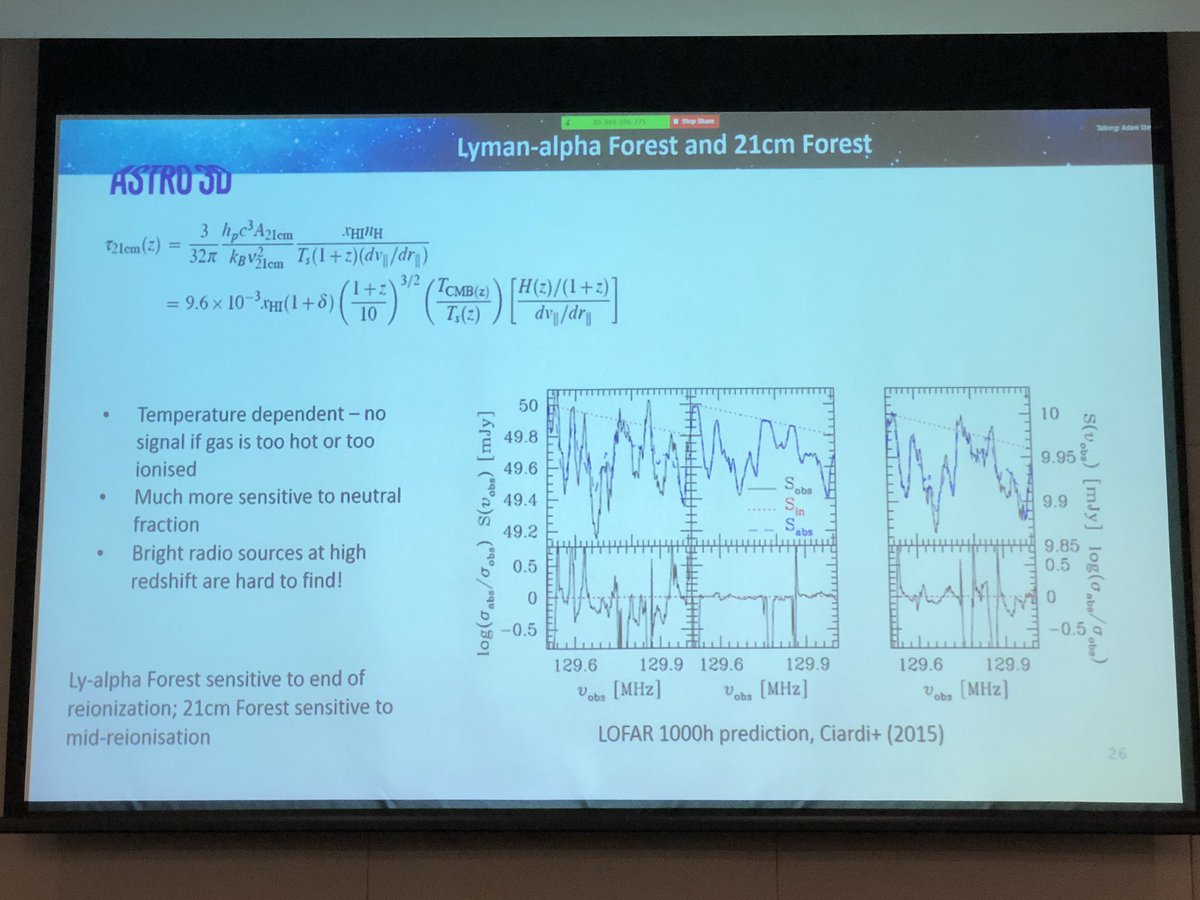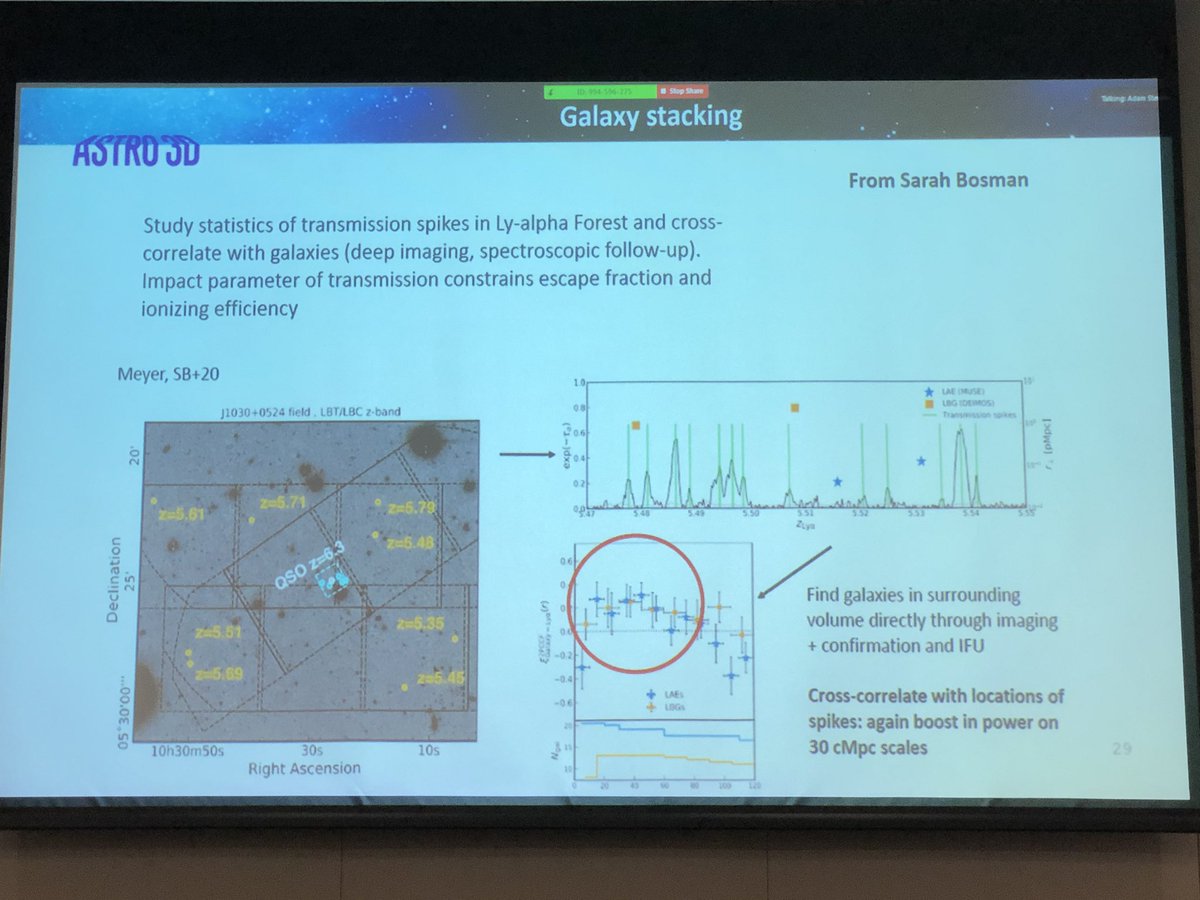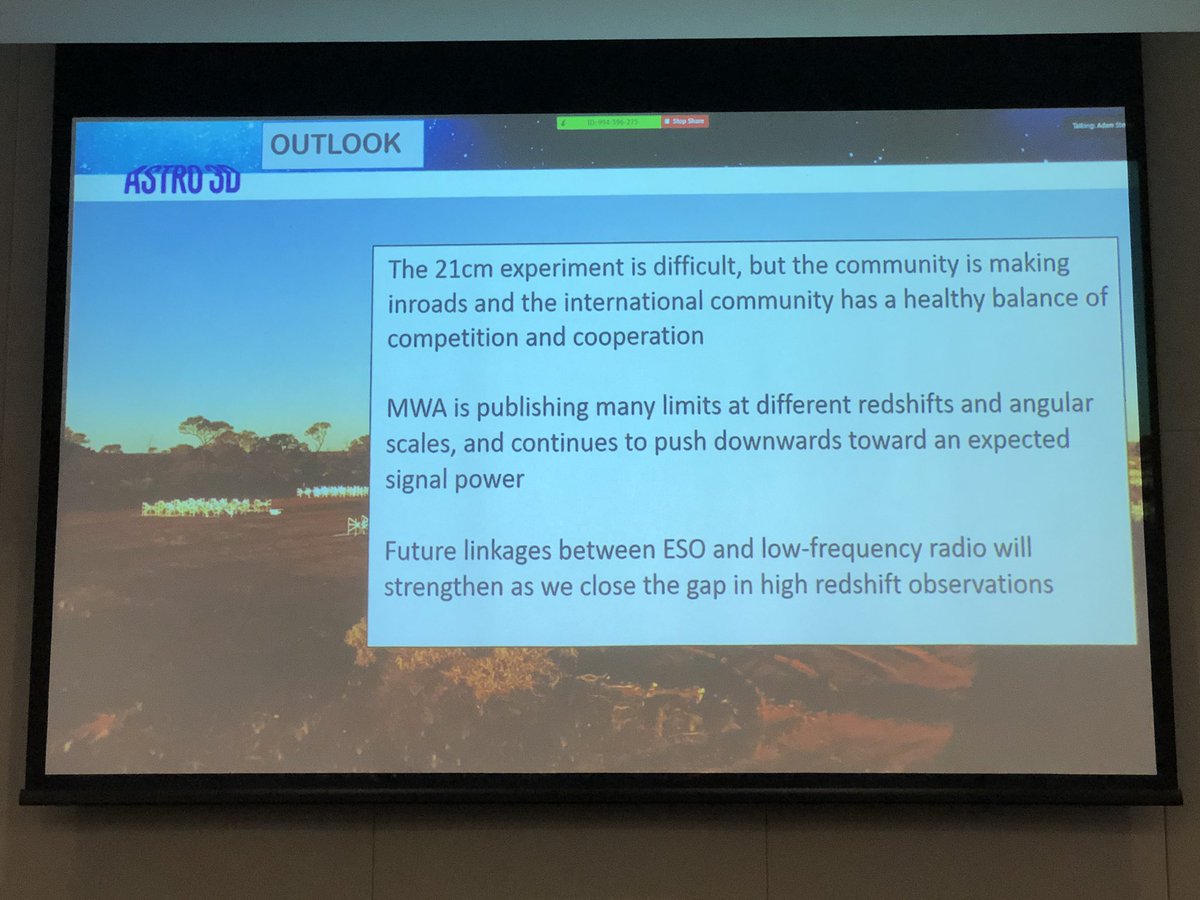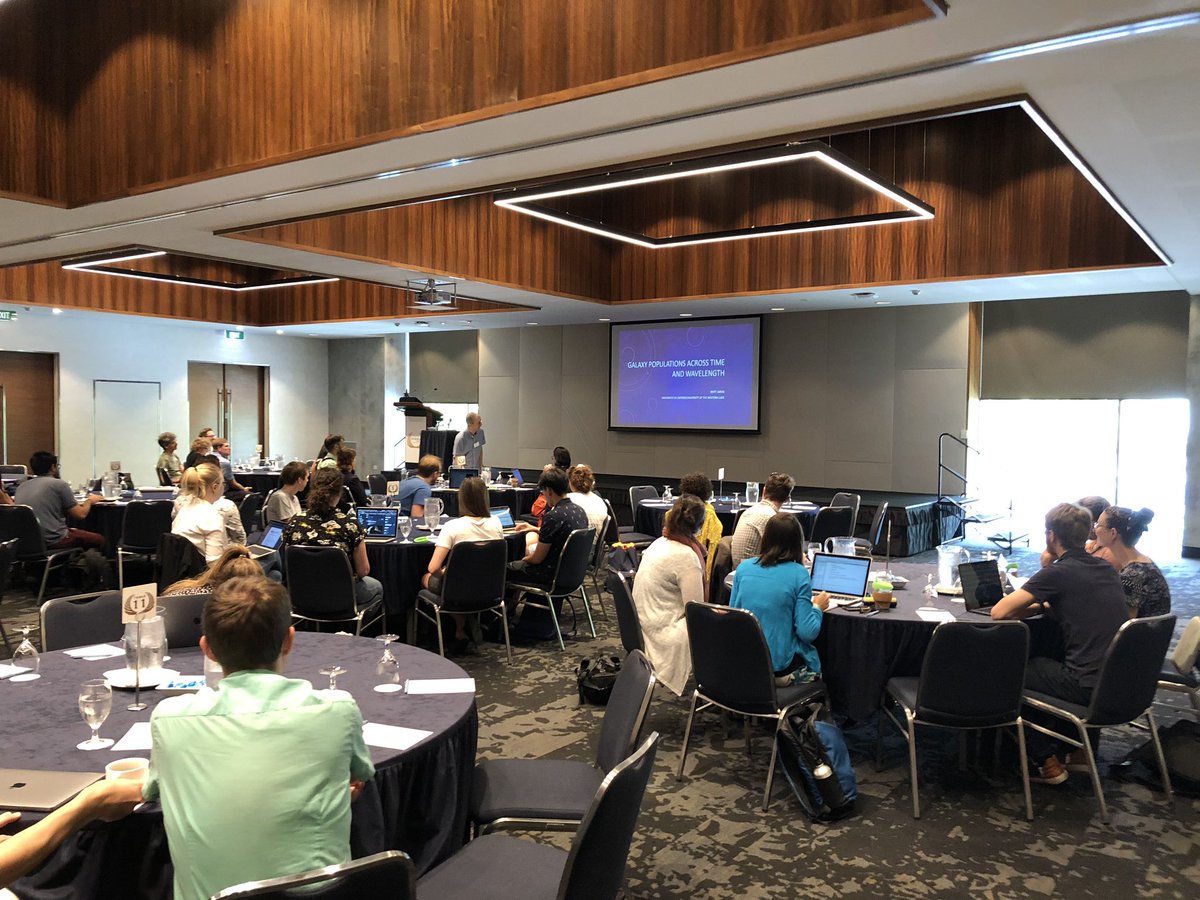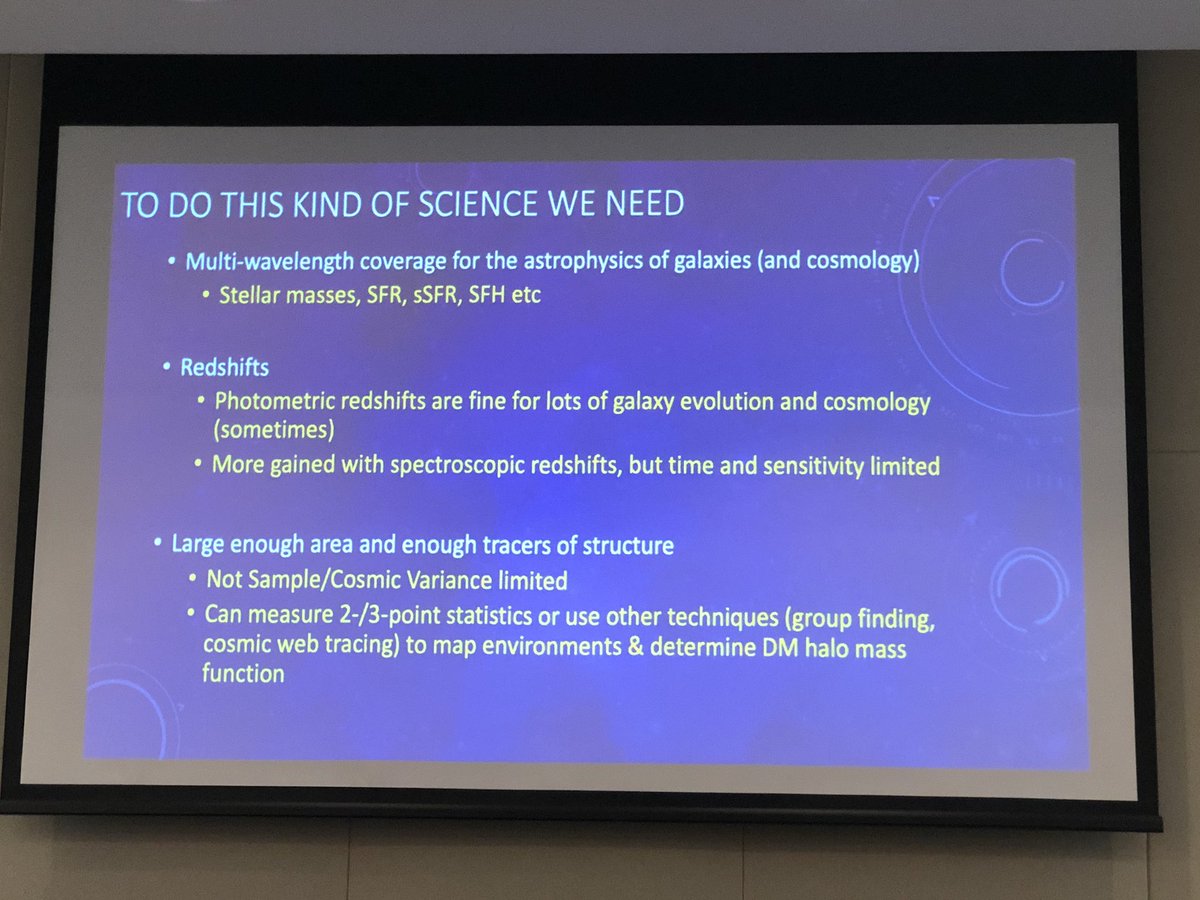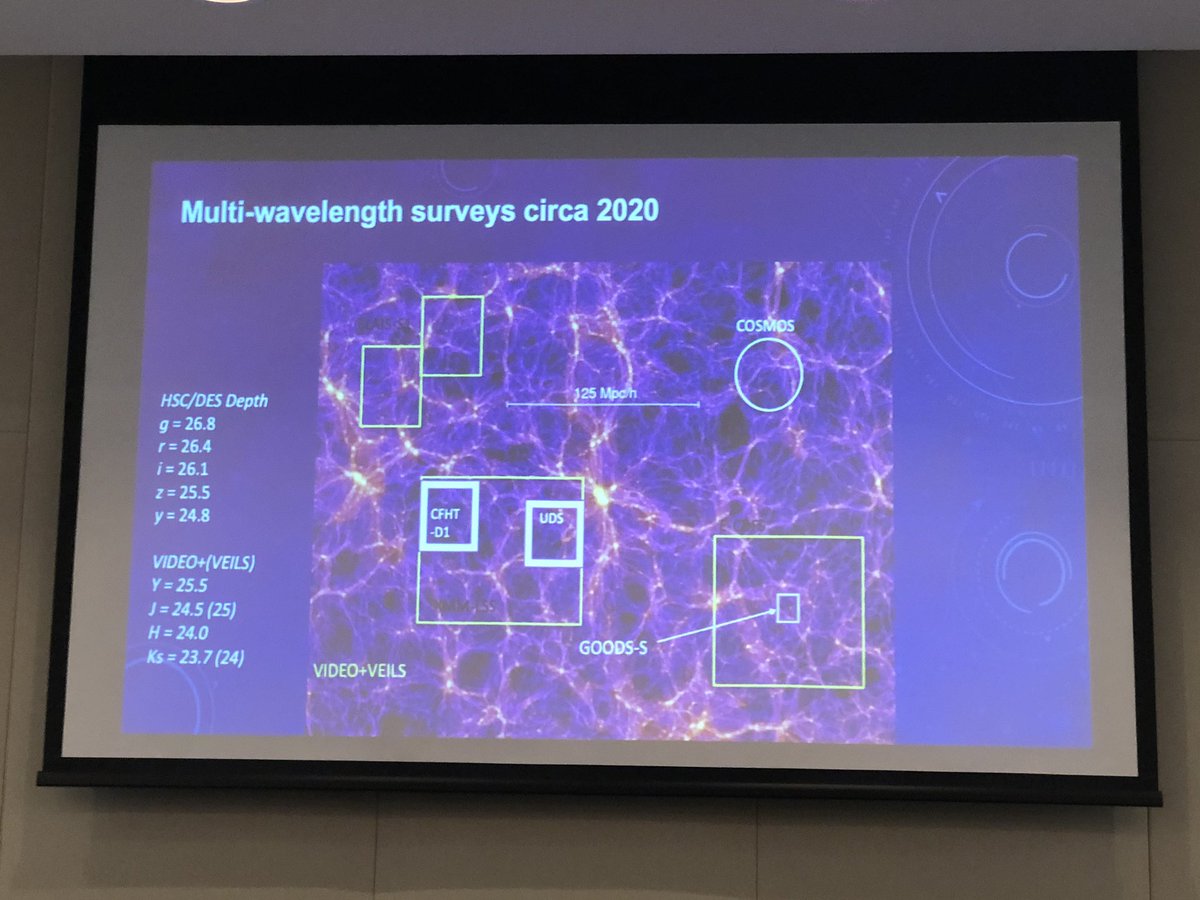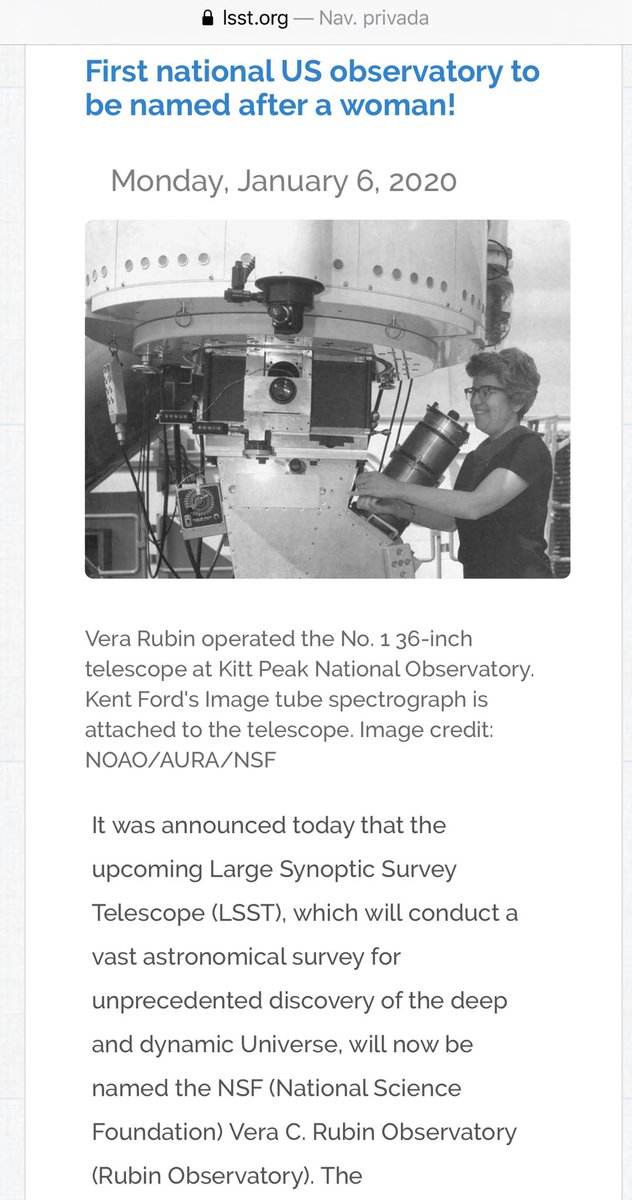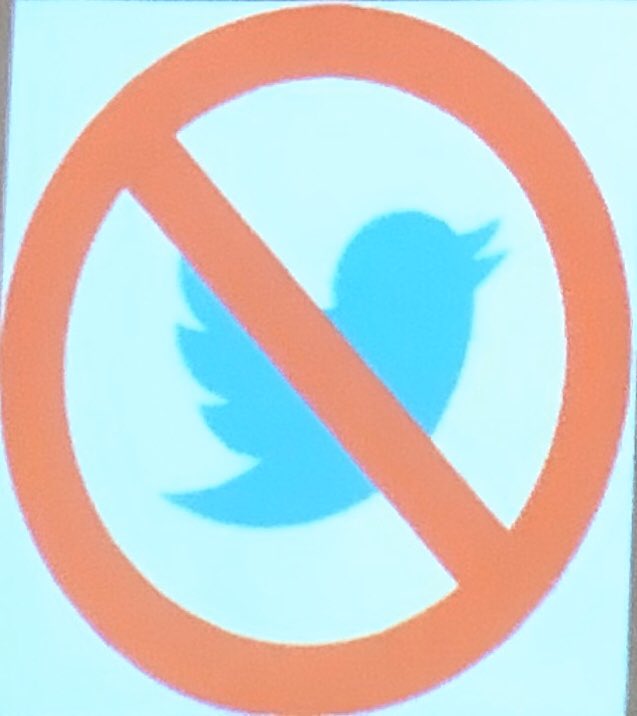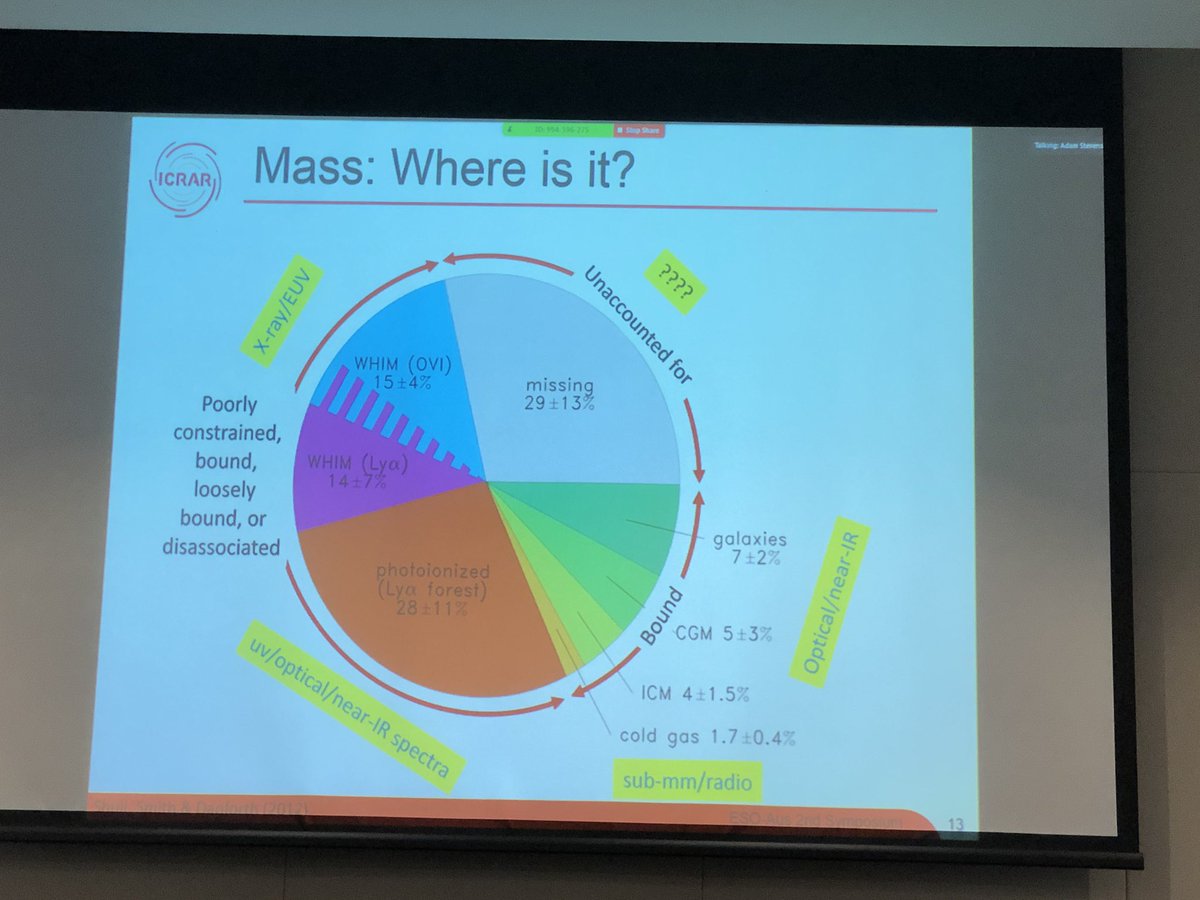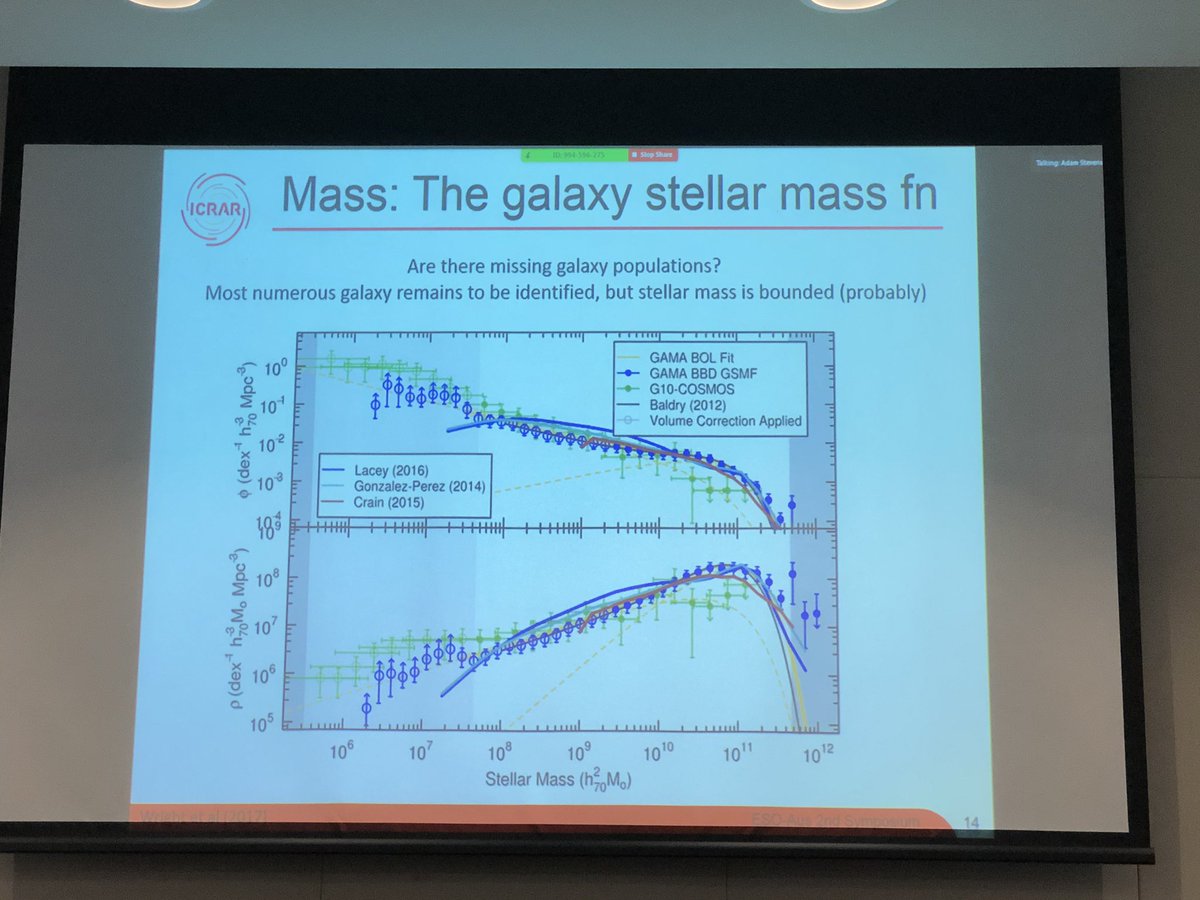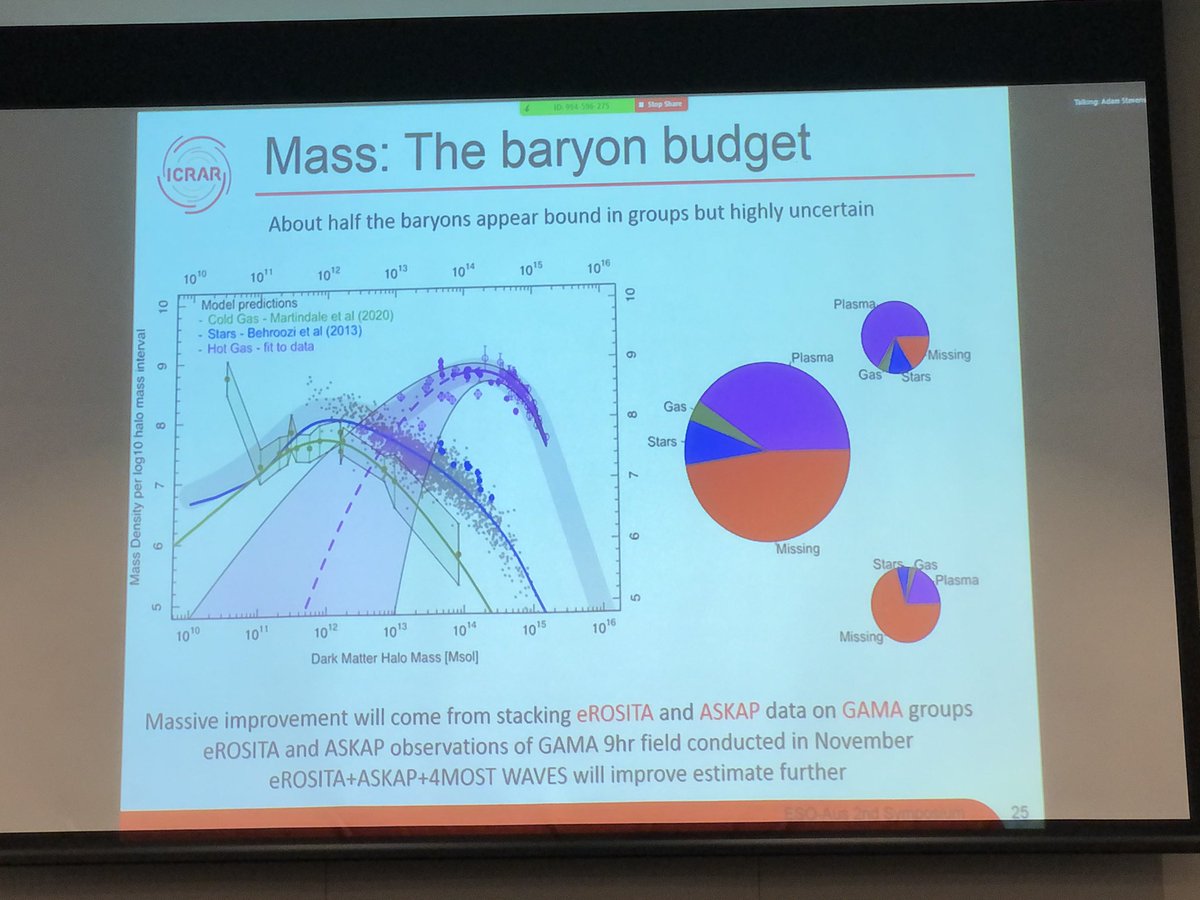
The first #bluemuse @bluemusevlt Science Workshop is starting right now online! 186 astrophysicists around the world discussing the amazing science this new @ESO’s VLT telescope! Thanks @novaric for organising this! 



First talk at #bluemuse workshop is by Roland Bacon, who provides a very good overview of the success of MUSE at @ESO’s VLT and gives the context of why deciding to build a blue-optimised Integral Field Unit (IFU) next 




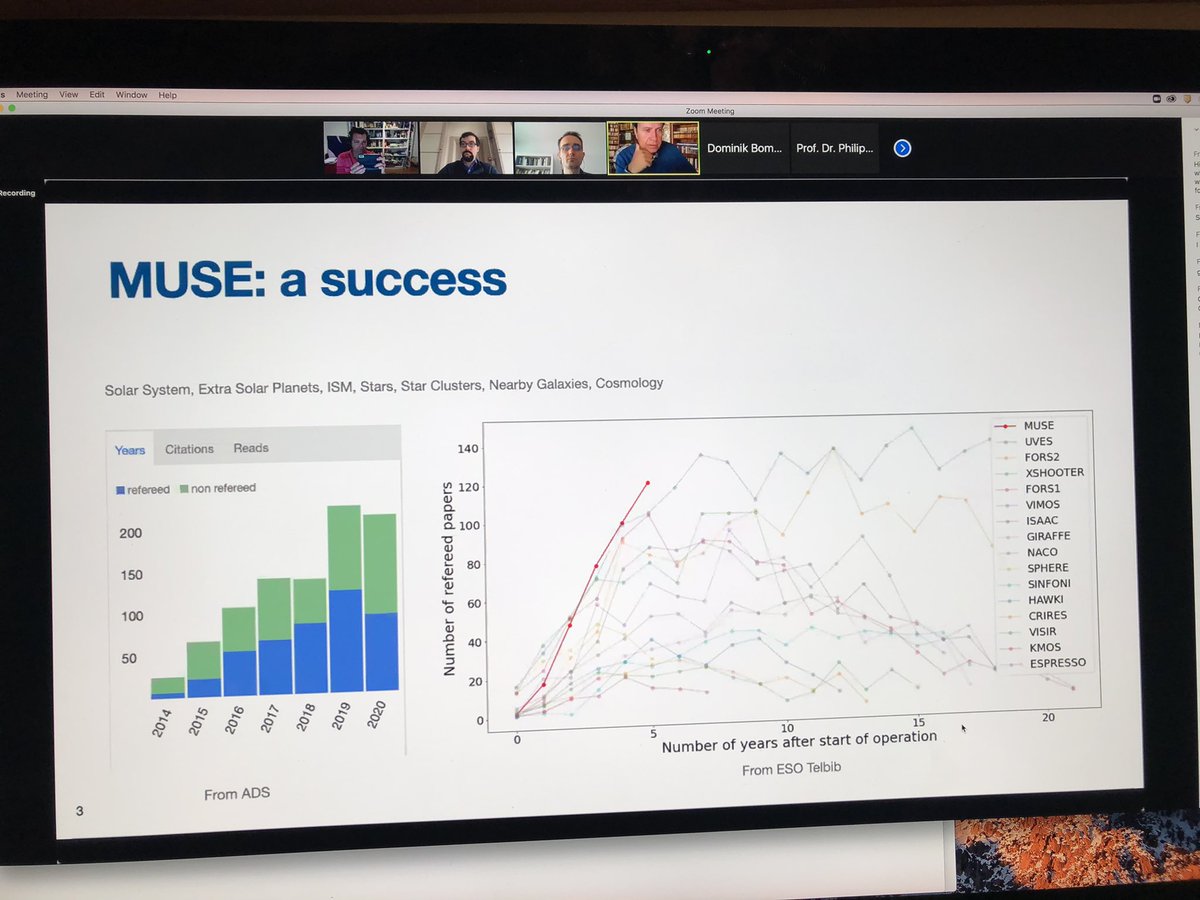


Next in #Bluemuse workshop is Johan Richard @novaric providing a project overview of the @bluemusevlt instrument: the 3 top level parameters (blue coverage, medium spectral resolution, field of view of 1.4’ x 1.4’) and some important science cases 







Plenty of information about the @bluemusevlt instrument and the science this new @ESO's VLT will provide is available in the "#BlueMUSE White Paper" led by Johan Richard @novaric arxiv.org/abs/1906.01657 

Next in the #BlueMuse workshop is Alexandre Jeanneau, who presents the @bluemusevlt optical design, also discussing its curved detectors 







After the coffee break (and I’m also having a coffee despite being 9pm in Sydney) we resume #bluemuse workshop with a talk by Cyrielle Opitom about observing comets with @bluemusevlt. With MUSE they detected very faint gas emission in comets far from the sun! 







Cyrielle Opitom discusses the comet research they could do with @bluemusevlt. The brightest CN emission is in the blue wavelengths, that also allows them to study other species. They could study the composition and activity of both distant & interstellar comets #BlueMuse 





Next is Carlo Felice Manara @ESO’s support astronomer, talking about using @bluemusevlt for observing planetary disks, forming planets and proplyds! The blue part of the spectrum has key features to study planet formation with #bluemuse 







We had ~16 short contributions (2 min/each) with very interesting science cases for @bluemusevlt before breaking for “lunch”... in Europe, for me was ~1h taking it easy reading in bed (11pm-midnight). Now we’re back to #bluemuse workshop
This session of the #bluemuse workshop is about massive stars. First, Fabrice Martins talks about constraining the evolution of massive stars with @bluemusevlt 







Next in #bluemuse workshop Sebastian Kamann discusses the important contribution that an instrument like @bluemusevlt would have in unravelling the mysteries of massive star clusters 







Now Norberto Castro talks about dissecting the most massive stars with MUSE and the future leap forward with @bluemusevlt. He shows their MUSE results in R136, the centre of 30 Doradus (Tarantula nebula, NGC 2070). Advantage: stars and surrounding gas #bluemuse 







Next my friend Miriam García (who I’ve not seen in years!) talks about un-targeted studies of massive stars in Local Group galaxies with @bluemusevlt: low-metal massive stars can form binary black holes detected in GW, understand star formation & role of environment #bluemuse 







Now in the #bluemuse workshop Anna McLeod gives a beautiful, well-presented talk about using IFS observations for studying the feedback from massive stars in nearby galaxies and what @bluemusevlt could get 







Time for another coffee break at the #bluemuse workshop... well, at 1:30am is herbal infusion + yogurt break for me... ah, very nice the photos during the breaks ;-) 

OK, it’s 2am in Sydney and the last session of the #bluemuse workshop is about to start... a quick selfie showing I’m still awake! Planetary nebula and nearby galaxies, my favourite research topics! 

Jeremy Walsh @ESO provides an overview of the importance of observing planetary nebula with large integral field spectrographs like MUSE and how @bluemusevlt would help to get even better results and solve some existing problems (as the ADF problem) #bluemuse 







Now in #bluemuse workshop Matthew Hayes talks about starbursting galaxies: extragalactic science enabled by @bluemusevlt at low redshifts 







Next in #bluemuse workshop Kathryn Kreckel discusses the importance of dissecting star-formation in galaxies. They use the PHANGS survey that combines @almaobs + @HubbleTelescope + ESO’s MUSE... of course @bluemusevlt would be awesome... plenty to say here but I’m too tired 







Now Angela Adamo presents “Multi-scale stellar feedback in the era of large optical IFUs: where we stand and what we will achieve with @bluemusevlt” #bluemuse 







The last talk for today’s #bluemuse workshop is given by Giacomo Venturi presenting “Dissecting outflows and feedback in nearby AGN: from MUSE to @bluemusevlt” 







Second day of the #bluemuse online workshop! First Alessia Moretti talks about gas stripping in galaxies: lessons from MUSE and perspectives for @bluemusevlt 







Now it was time for my talk at the #bluemuse workshop! Have a look that I was really ready for that ;-) @novaric is in the screen. I presented “The HI-KIDS (HI KOALA IFS Dwarf galaxy Survey) as an example of science case for @bluemusevlt” 

Of course I couldn’t tweet while giving my talk at the #BlueMuse workshop (although in the past I’ve scheduled my tweets), but @bluemusevlt did it for me :-)
https://twitter.com/bluemusevlt/status/1326088633561047040?s=21https://t.co/PR1LGicjfZ
Some screenshots of the most important points I wanted to make during my talk at the #BlueMUSE workshop, when I presented Hi-KIDS as an example of science case for @bluemusevlt 







Next in the #bluemuse workshop Davod Krajnovic talks about compact galaxy groups as great targets to study with @bluemusevlt 







Now at #bluemuse workshop PhD student Junais Snc gives a very nice talk about the giant low surface brightness galaxy Malin 1 and how @bluemusevlt would be awesome for understanding it, extended UV disks (XUV) and low surface brightness galaxies 







Now Peter Weilbacher(*) shows in the #bluemuse workshop how to use MUSE extended mode to get bluer wavelengths (till 4300 Å) but many problems, hence @bluemusevlt is desperately needed!
(*) I know he has Twitter, but I can’t find him!!



(*) I know he has Twitter, but I can’t find him!!




Last talk before the coffee break at the #bluemuse workshop is Russell Smith talking about using MUSE for observing nearby strong lens and prospects for @bluemusevlt 







After a short break, #bluemuse workshop is back with a talk by Jean-Paul Kneib, who discusses prospects for @bluemusevlt in massive lensing clusters 







Next in #bluemuse workshop Emanuele Daddi discusses high redshift galaxy clusters prospects for @bluemusevlt 







Now Michael Maseda talks about connecting high-z strong star-forming low-mass galaxies (via Lyman-alpha emission) to nearby low-mass galaxies (via standard optical emission lines) with @bluemusevlt at the #bluemuse workshop 







After the lunch break (for Europeans, as it’s midnight in Sydney) we are back to #bluemuse workshop with Celine Peroux talking about unlocking the astrophysics of the circum-galactic medium with @bluemusevlt. Metallicity is KEY! 





Next is Johannes Zabl talking about gas flows around galaxies: mapping the CGM in absorption and in emission with @bluemusevlt #blueMUSE 







Now Tanya Urrutia @astrobellatrix discusses how to study the warm (~10000K) circumgalactic medium (CGM) in emission with @bluemusevlt #bluemuse 







The last talk about the afternoon coffee break in the #bluemuse workshop is by Peter Mitchell, who provides a simulations perspective on @bluemusevlt and the high-redshift circumgalactic medium 





@threadreaderapp unroll please!
• • •
Missing some Tweet in this thread? You can try to
force a refresh



